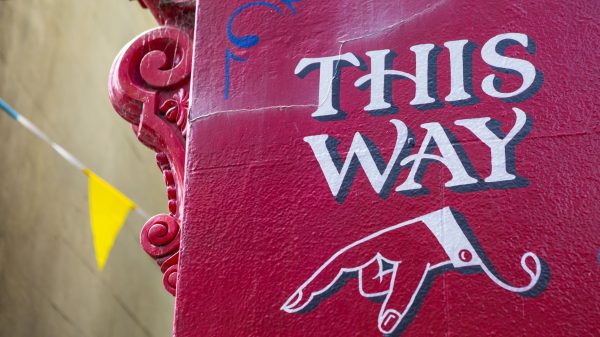Building a brand is more than creating a catchy name or an attractive logo; it’s about establishing a distinct identity that sets your business apart from the competition. One of the most critical steps in this process is trademark registration.
This guide will take you through the UK trademark registration process, ensuring your brand is legally protected and poised for success.
Understanding Trademarks

What is a Trademark?
A trademark is a sign capable of distinguishing the goods or services of one enterprise from those of other enterprises. It can include words, logos, and slogans. For instance, the Nike swoosh and the phrase “Just Do It” are both trademarks.
Why Are Trademarks Important?
Trademarks protect your brand’s identity and prevent others from using similar signs that could confuse consumers. They are essential for safeguarding the unique elements that make your brand recognisable and trusted by your customers. Without trademark protection, your brand could be vulnerable to infringement, diluting its value and damaging your reputation.
Preparing for Registration
Conducting Research
Ensure your trademark is unique before registering it. Conducting a thorough search helps avoid potential conflicts and legal issues. The UK Intellectual Property Office (IPO) provides an online search tool to check if your desired trademark is already used.
- How to Use the Search Tool: Visit the UK IPO website and access the trademark search tool. Enter your proposed trademark to see if similar marks exist in the same class of goods or services.
Identifying the Correct Classes
Trademarks are categorised into different classes based on the type of goods or services they represent. This classification system, known as the Nice Classification, consists of 45 classes: 34 for goods and 11 for services. Identifying the correct classes is essential because you must register your trademark under the relevant ones.
- Example: If you are registering a trademark for a clothing brand, you would likely need to include Class 25 (clothing, footwear, headgear).
Application Process

Completing the Application Form
Once you’ve researched and identified the correct classes, the next step is to complete the trademark application form available on the UK IPO website. This form requires detailed information about your trademark and its use.
- Information Needed: Include the trademark representation (e.g., logo or word mark), the applicant’s name and address, and the classes of goods or services.
Paying the Fees
The cost of trademark registration varies depending on the number of classes you register under. The basic fee covers one class, with additional fees for each additional class.
- Fee Structure: The current fee for filing a trademark application online is £170 for one class, with an additional £50 for each extra class.
Examination and Publication
Examination by the UK IPO
After submitting your application, the UK IPO will examine it to ensure it meets all legal requirements. The examination process includes checking for absolute and relative grounds for refusal.
- Absolute Grounds for Refusal: These include descriptive, generic, or deceptive trademarks.
- Relative Grounds for Refusal: These involve conflicts with earlier trademarks.
Publication in the Trade Marks Journal
If your application passes the examination, it will be published in the Trade Marks Journal for two months. This publication period allows third parties to oppose your trademark registration if they believe it conflicts with their existing trademark rights.
Opposition Period

Dealing with Opposition
During the 2-month publication period, third parties can file an opposition if they believe your trademark infringes on their rights. If an opposition is filed, you must respond, potentially entering into negotiations or legal proceedings to resolve the issue.
- Responding to Opposition: You may need to provide evidence supporting the uniqueness and use of your trademark. Negotiations can resolve oppositions without the need for a formal hearing.
No Opposition Filed
If no opposition is filed within 2 months, your trademark will proceed to registration. This means that your trademark is now legally protected in the UK.
Registration and Maintenance
Receiving Your Registration Certificate
Once registered, you will receive a certificate of registration. This document is proof that your trademark is protected under UK law. The initial protection period lasts for ten years from the filing date.
- What the Certificate Includes: The certificate will detail the trademark, the classes it covers, and the registration date.
Renewing Your Trademark
Trademark protection is not indefinite. You must renew your trademark every 10 years to maintain its protection. The UK IPO will send a renewal reminder, but it’s good practice to keep track of the renewal dates yourself.
- Renewal Fees: The fee for renewing a trademark is £200 for one class and £50 for each additional class.
Enforcement and Monitoring

Actively Enforcing Your Rights
Registering your trademark is insufficient; you must actively enforce your rights to prevent unauthorised use. This involves monitoring the market for potential infringements and taking legal action when necessary.
- Legal Actions: This can include sending cease-and-desist letters, filing lawsuits, or negotiating settlements.
Using Monitoring Services
To ensure comprehensive protection, consider using trademark-watching services. These services monitor new trademark applications and market activities to identify potential infringements or conflicts with your trademark.
- Benefits of Monitoring Services: They provide early warnings of potential infringements, allowing you to take prompt action to protect your brand.
Conclusion
Registering a trademark is a vital step in building and protecting your brand. Following the UK trademark registration process can secure your brand’s identity and ensure its long-term success. Each step is crucial in safeguarding your brand, from conducting research and identifying the correct classes to completing the application process and actively enforcing your rights.
Remember, a trademark is more than just a legal formality; it’s a powerful tool that helps distinguish your brand in a competitive market. By investing in trademark registration, you invest in your brand’s future, reputation, and value.
Whether you’re a startup aiming to make a mark or an established business looking to protect your assets, understanding and navigating the trademark registration process is essential. Secure your brand today and lay the foundation for a thriving business tomorrow.























































